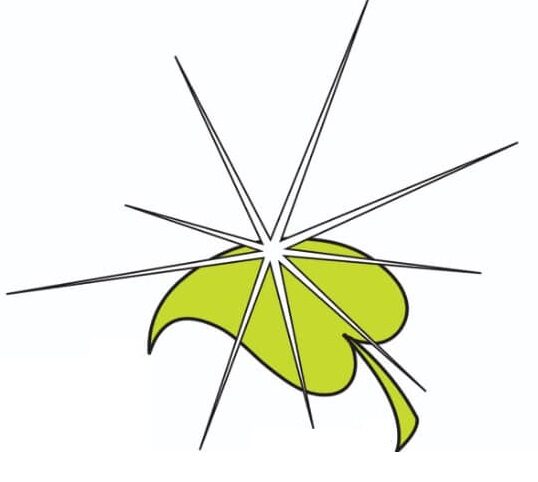Tannins:
Compilation and arrangement of Engineer Javidi.
Description:
Tannin is one of the largest group of polyphenols – it has a high molecular weight –
– Taste (gassy-slightly sour) – They are found in nature in glycosidic form – When reacting with water, they get a very mild acid form – Tannin precipitates with protein (tannins have so much phenolic hydroxyl that they form stable crosslinks with proteins) And the same grass links prevent the activity of enzymes with proteins) and this feature is used in leather industry.
It is used in plants (rubber, spruce, pine and oak) – tannins form a precipitate with polysaccharides and some alkaloids (caffeine(.
……………………………………….
Classification according to tannin origin:
1).Physiological tannin:
In the natural state, it is present in the plant (tea, persimmon, plant, broom egg, Persian flower, etc.)
2).Pathological tannin:
It is caused by a scratch (natural or insect bite) on the branch of some trees. Like callus (callus) of an oak tree, which we call oak apple.
oak apple (Mazo) properties:
Astringent-anti-diarrhea-anti-infection-anti-bleeding
……………………………..
Chemical classification of tannins:
Hydrolyzable tannins-condensed tannins
1).Hydrolyzable tannins:
Description:
Derived from gallic acid and phenolic acids that are attached to a sugar during an ester reaction.
When the gallic acid groups bind together, it causes the formation of ellagic acid dimer.
During hydrolysis, the hydrolyzable tannins are converted into gallotannin (gallic acid + glucose) and allagitannin (ellagic acid + glucose), which are soluble in water and alcohol – in plants such as gaffath and aromatic geranium.
Feature:
Mucous anti-inflammation – reducing mucous secretions – anti-swelling and inflammation caused by pollution – anti-bleeding – anti-uterine bleeding and spotting – anti-diarrhea and dysentery – anti-vaginal and eye infections and…
Types of hysterolizable tannins:
Sanguine: in the rubus aerus plant (a type of red raspberry) – antioxidant – anticytotoxic.
Ragosin D: in spirea plant – anti-cancer.
Gallutanic acid: in oak plants – astringent – antiseptic – anti-hemorrhagic
Enotine B: in Epilobium genus – anti-hemorrhagic
Hamamelli tannin: in the Hamamelis plant – inhibits alpha-reductase enzyme 5 (anti-prostate hyperplasia) – inhibits aromatase enzyme (anti-monopose) – anti-cancer
Geranin: in Philanthus plant (scented candlestick) – antioxidant – anticytotoxic – skin tonic.
Agrimonin: in Ghafath plant – anti-diarrhea and astringent
………………………………………… ………….
2). Condensed tannins (phyllobutanin):
Description:
By hydrolyzing, they create red precipitates insoluble in water and alcohol, which we call flubafen.
1-Lecanthocyanin:
With the chemical name of flavan-4-3-diol.
– Catechin:
or cyanidanol with the chemical name flavan-3-ol, low molecular weight, and is not considered as a real polyphenol – it has a little astringent effect –
Feature:
Antioxidant-anti-aging-antibacterial-reducing blood fat-strengthening of heart vessels-anti-arteriosclerosis and…
Plants with catechins:
Cocoa-black tea-green tea-white tea (a lot)-grape seeds-pine bark (radiate)
– When two or more catechins or epicatechins are connected with a simple carbon bond, the substance obtained is called oligomeric polycyanidin.
– Pignognol:
– Epigallocatechin substance, extracted industrially, is obtained from grape seeds and the bark of Radiana pine tree (Southern Islands of New Zealand).
Properties of pygnonol:
– Antioxidant activity, 20 times vitamin C
The ability to trap hydroxyl and lipid peroxide free radicals.
Delaying lipid peroxidation.
– Inhibiting the negative and destructive effects of some enzymes related to the breakdown of connective tissue structures.
– Tonic blood vessels
– Anti-arteriosclerosis
Note on the consumption of foods and substances containing tannins:
Due to the formation of sediment with proteins (proteins are the type of enzymes that digest food in the body) and also minerals in food, the consumption of tannins should be done at least 1 to 2 hours before or after eating. Otherwise, it will cause indigestion. And the lack of minerals, especially the reduction of iron reserves in the body.
Good luck – forever-JAVIDI
Javidi,Engineer Javidi,Javidi Tab,Zarin Giyahe Pars,Reza Javidi,Phytochemistry,Plant Chemistry,Medicinal Plant Chemistry,Tannin,What is Tannin,Tannin Types,Tannin Structure,Tannin Properties,Tannin Harms,Hydrolyzable Tannin,Physiological Tannin,Pathological Tannin Maso,what is maso,properties of maso,broom egg,green tea,white tea,black tea,condensed tannin,glutanin,alagitannin,sanguine,ragosine di,gallutanic acid,gallutanic acid,enoteine B,hamamelli tannin,geranin,Agrimonin,inhibition of 5-alpha reductase enzyme,inhibition of aromatase enzyme,rubus idus,spirea,oak,oak,oak genus,anti hemorrhagic,epilobium genus,anti-cytotoxic,cytotoxic,strong antioxidant,strong anti-cancer,phyllobutanen,cyanidol,Flavan-3-L, flavan-4-3-diol,loganthocyanin,catechin,properties of catechin,what is catechin,foods containing catechin,catechin plants,polycyanidinoligomers,epicatechin,epigallocatechin,pygnonol,what is pygnonol,properties of pygnonol,Metal deposition,proteindeposition,interference with digestion,indigestion,anemia,reduction of lipid peroxidation,reduction of lipid hydroxylation.
